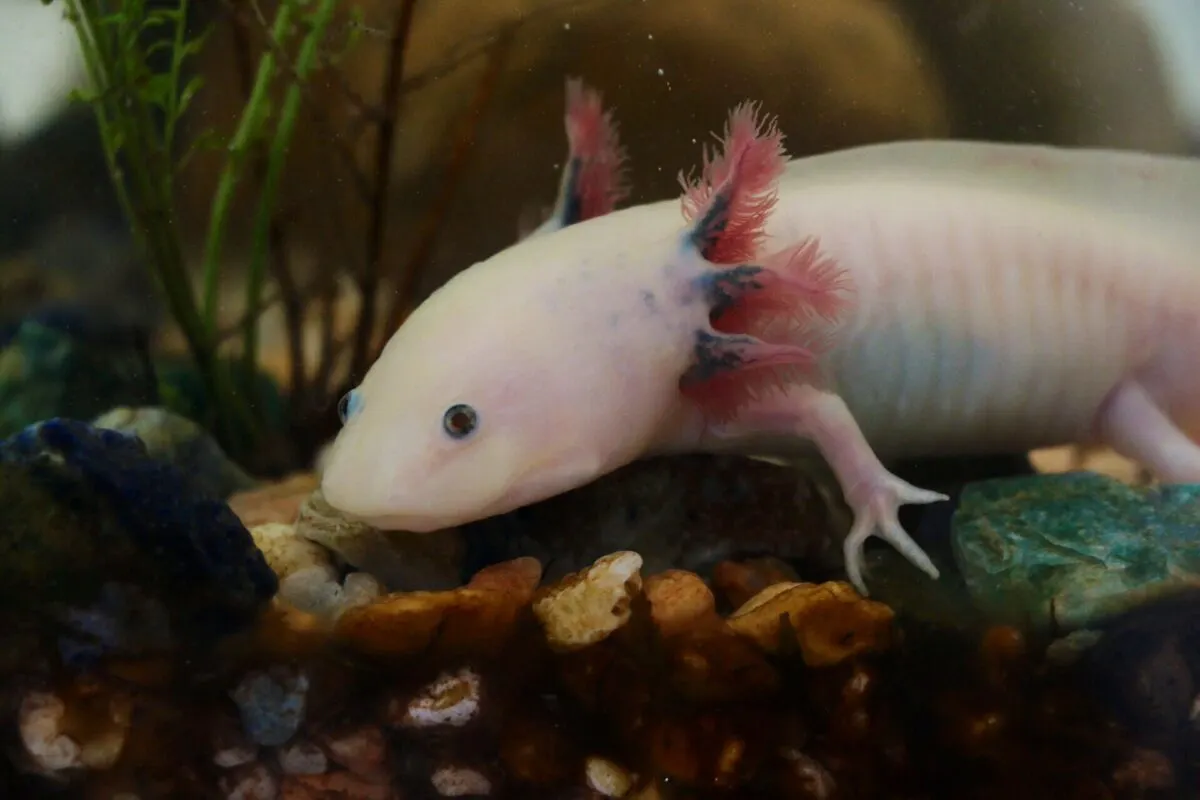Welcome to our article about the Axolotl.
The world is home to a plethora of exciting species. Many have characteristics that appear almost incomprehensible to humans. One such exciting critter is the Axolotl – an aquatic salamander. It betrays the nature of its fellow land-living amphibians by thriving in deep waters their whole lives.
If you like adorable little creatures wagging their tails in an aquarium, you would love to keep an axolotl as a pet. With their cute smiling face with pink blushes protruding all over their heads, axolotls are undoubtedly the perfect aquatic companions.
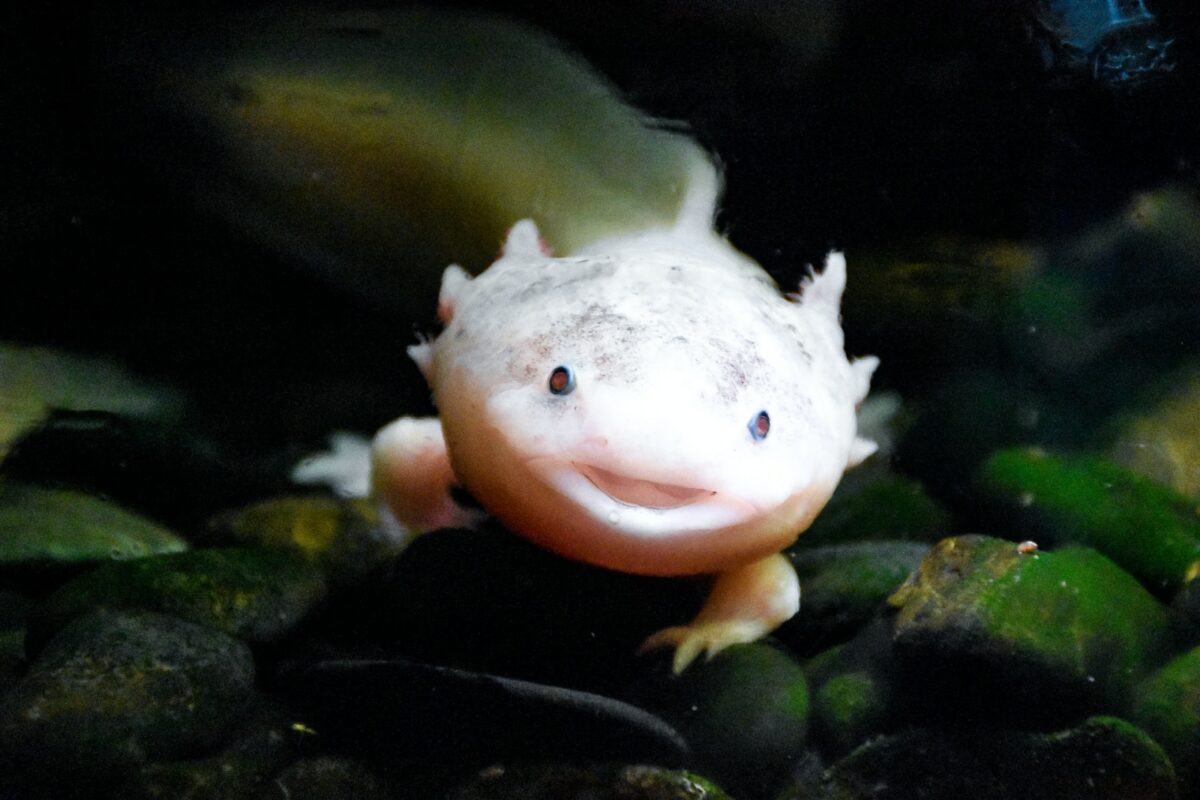
Axolotls are closely associated with the family of tiger salamanders. The primary distinction between the two species is that tiger salamanders prefer residing on land, while the axolotls are primarily aquatic species.
The growth and lifestyle of axolotls are pretty fascinating. They have intrigued scientists worldwide, causing them to study their ability to exhibit bodily changes thoroughly.
If you want to learn about axolotls, you’ve landed right! Stick here with us to dive into a complete fact file about axolotls. You will undoubtedly be blown away by their abilities!
Introduction To Axolotls
The Axolotl is an adorable tiny creature whose name derives from Xolotl, the Aztec lord of lightning and fire. The legends claim that Xolotl converted himself into an axolotl to avoid getting sacrificed. Even though his ploy failed and he was eventually killed, the Axolotl remains an iconic creature that has enthralled people for ages.
In addition, they also go by the name of the ‘Mexican Walking Fish.’ They constitute a unique species of salamanders due to their distinctive lifestyle and growing abilities.
Compared to ordinary salamanders, axolotls are neotenic creatures that still act as juveniles even after maturity and adulthood. This is primarily because their bodies do not undergo metamorphosis like a salamander.
Moreover, these amazing creatures can regrow nearly every component of their body. This includes their spine, internal organs, and even some areas of their brain – if necessary.
Furthermore, they have a very distinctive appearance and are favorite exotic pets, but you can abundantly find them in zoos, labs, and breeding centers.
However, an unfortunate fact is that these animals are nearly extinct in the wild. Their native populations in the rivers of Mexico have declined from approximately 5,500 animals per square kilometer to 35 animals per square kilometer.
The Habitat Of Axolotls
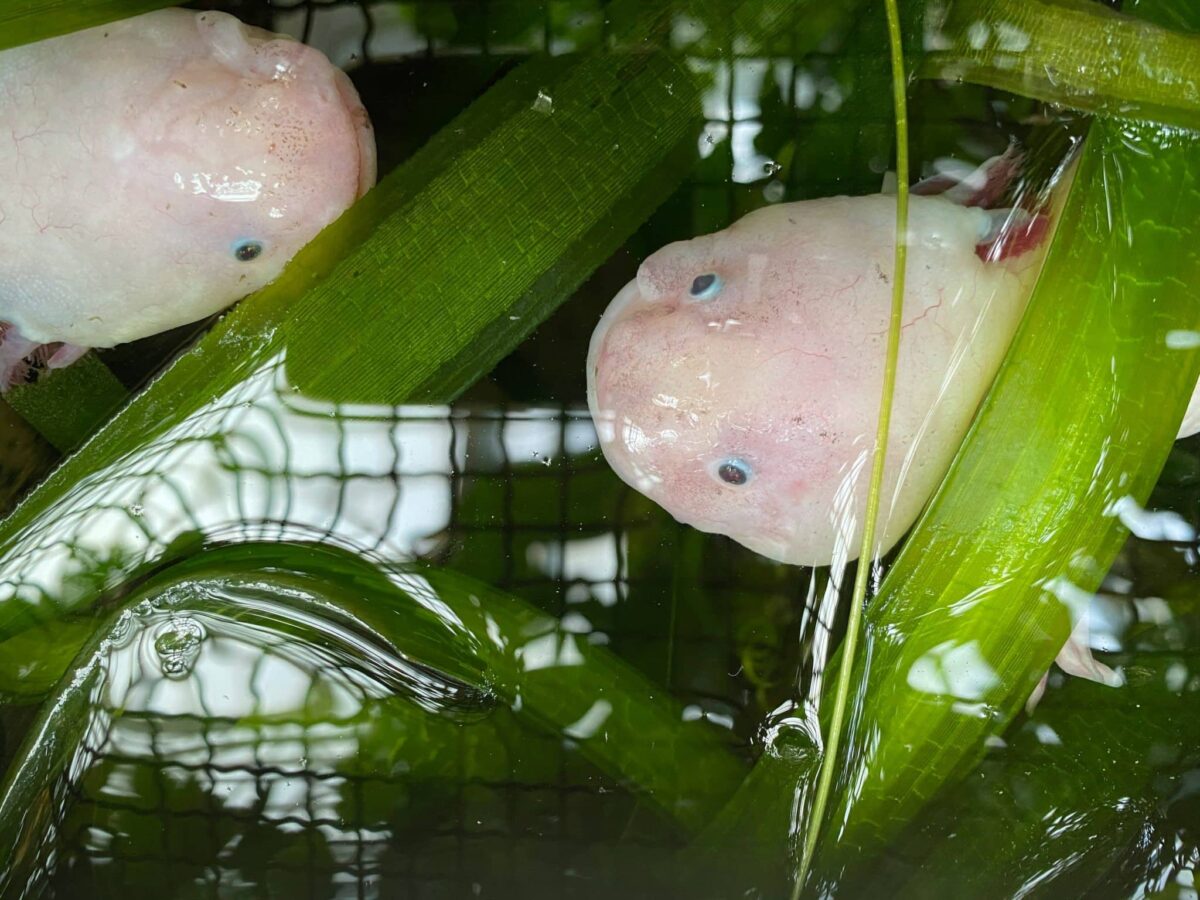
The axolotls are indigenous to the freshwaters of Lake Chalco and Lake Xochimilco in Mexico.
The temperature of the water of Lake Xochimilco is typically around 65 degrees Fahrenheit (18 degrees Celsius), which is the perfect temperature range that these critters prefer to survive in. They can be discovered near the bottom of the lake in areas surrounded by vegetation and crevices made of huge rocks.
The habitat of the Axolotl is similar to that of most neotenic species—a body of water at a high elevation surrounded by a dangerous terrestrial setting. Such surroundings allegedly favor neoteny.
However, much of their proper habitat has been drained off. After drainage works took place 85 years ago, the Xochimilco-Chalco basin’s once 77 square miles (200 square kilometers) of swamps, marshes, and lagoons shrunk drastically – simultaneously shrinking the Axolotl’s habitat. As a consequence, they became severely endangered.
The Appearance Of Axolotls
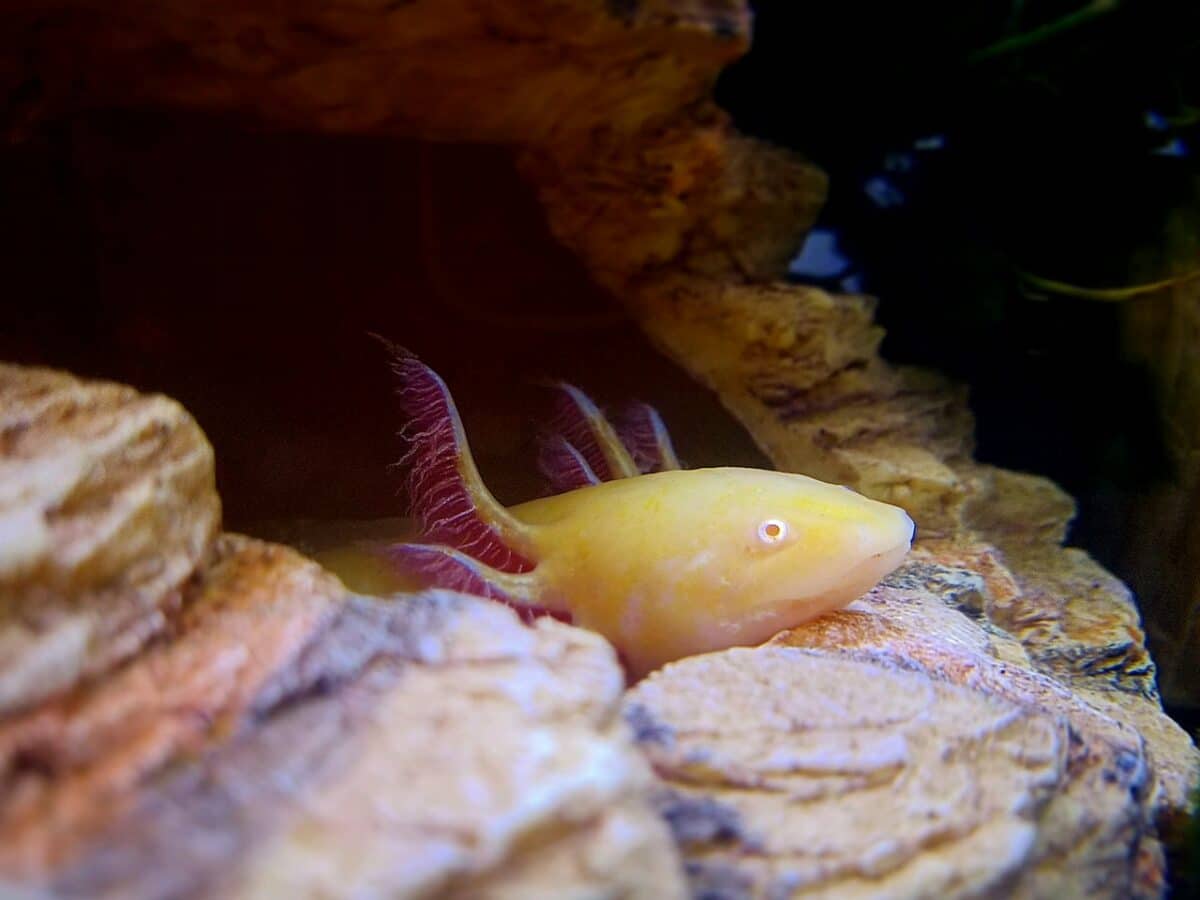
An axolotl has characteristics similar to that of typical salamander larvae. They have external gills and a caudal fin that extends from the back of their head to the vent.
Axolotls, both male, and female can grow up to 18 inches long and 8 ounces in weight, although the average length is approximately 9 inches. They possess large, flattened skulls and lidless eyes with slender mouths that seem smiling.
Moreover, they possess three branching gills that project from both sides of their head. The adult axolotls retain large, fluffy outer feathery gills, which most amphibians lose after adulthood.
Even though they can breathe through their skin and have working lungs like many other salamander species, they still prefer dwelling in deep waters and breathing through their external gills.
On the other hand, axolotls don’t need to rely on their flappy feet and legs for land movement, but they do need to be capable of moving through the water like a giant tadpole. This is why they have tiny, sensitive webbed feet and a long, tadpole-like tail capped with a transparent fin.
Reason For Neoteny
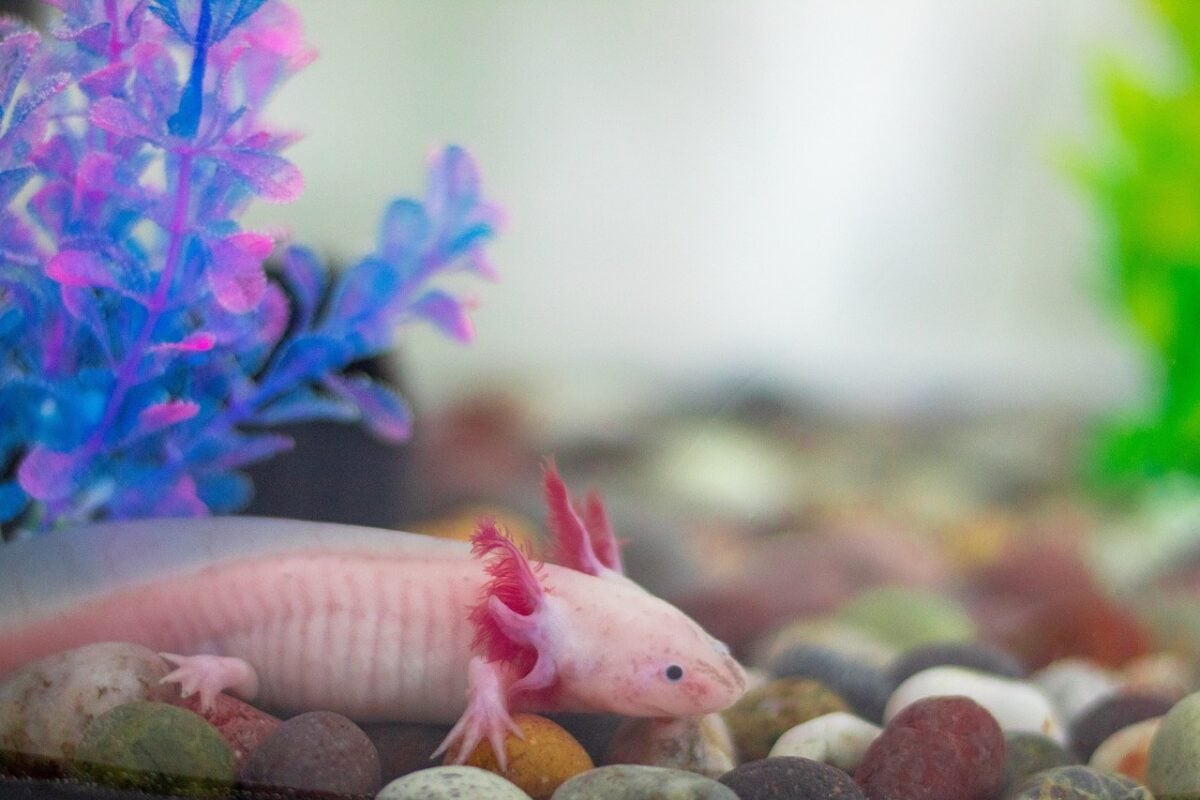
While most salamander species lose their external gills as they age, the Axolotl always has them. Axolotls are notably more aquatic than salamander species as per their neoteny development.
In essence, many scientists believe that axolotls maintain their baby-like appearance throughout their lives because the wild axolotl community evolved in remarkably stable habitats, unlike other salamander species.
Most other salamander species, including the tiger salamander, must get rid of their fluffy gills to breathe normally through their body and survive in wetlands that occasionally dry up throughout the year.
Moreover, wild axolotls did not have to expend energy modifying their bodies to accommodate their changing environment. This is so because they evolved in an environment with year-round water availability with only a few aquatic predators.
Axolotl Colors
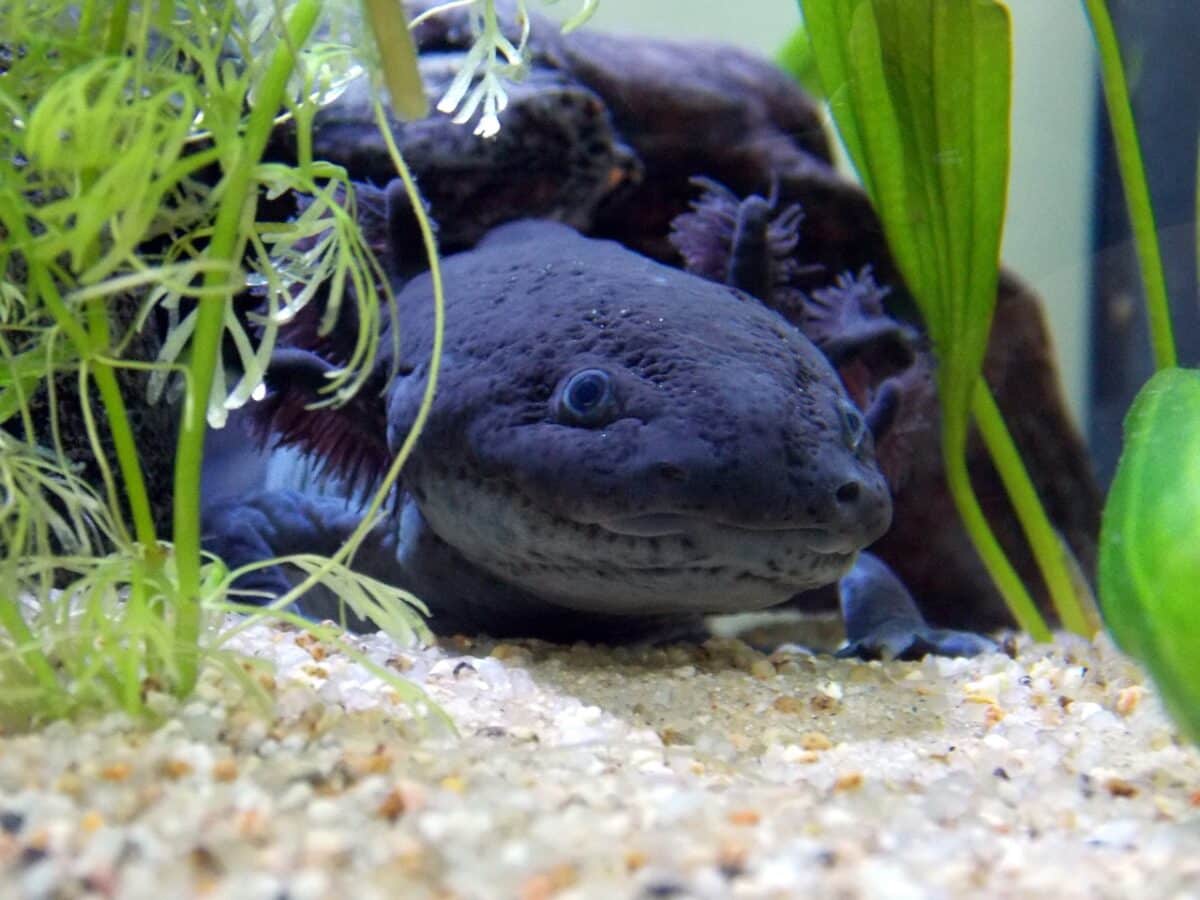
In contrast to other species in the same family, which all have one particular color in all their variants, axolotls possess four distinct pigmentation genes. This leads to different coloring in. their skin when a mutation occurs.
Wild axolotls have an olive-tan undertone with gold patches as their natural color, although genetic mutations can transform this color. The other common mutated variants include leucistic skin, golden albino, xanthic, albino, and melanoid.
The specifications of each color variant of axolotls are the following:
- Axolotls with leucistic skin have black eyes and pale pink skin.
- Golden albino axolotls have bright gold skin with matching eyes.
- Xanthic variants have gray skin and black eyes.
- Albino axolotls are pale pink or white paired with bright red eyes, a relatively common feature seen in axolotls as compared to other creatures.
- Melanoid variants have dark blue or black undertones without any specklings of gold or olive.
Besides, the volume, quantity, and intensity of the gold flaking on their coat vary significantly between individuals. At least one variety matures with a black-and-white brindled appearance.
Exotic pet breeders purposefully cross-breed specific variants to develop novel and intriguing color combinations in addition to these natural mutations.
Moreover, axolotls can modify their skin color to provide more excellent camouflage by altering their melanophores’ relative size and amount. Melanophores are cells containing the pigment melanin that controls the color and intensity of their coat and skin patches.
Axolotl Lifestyle And Behavior
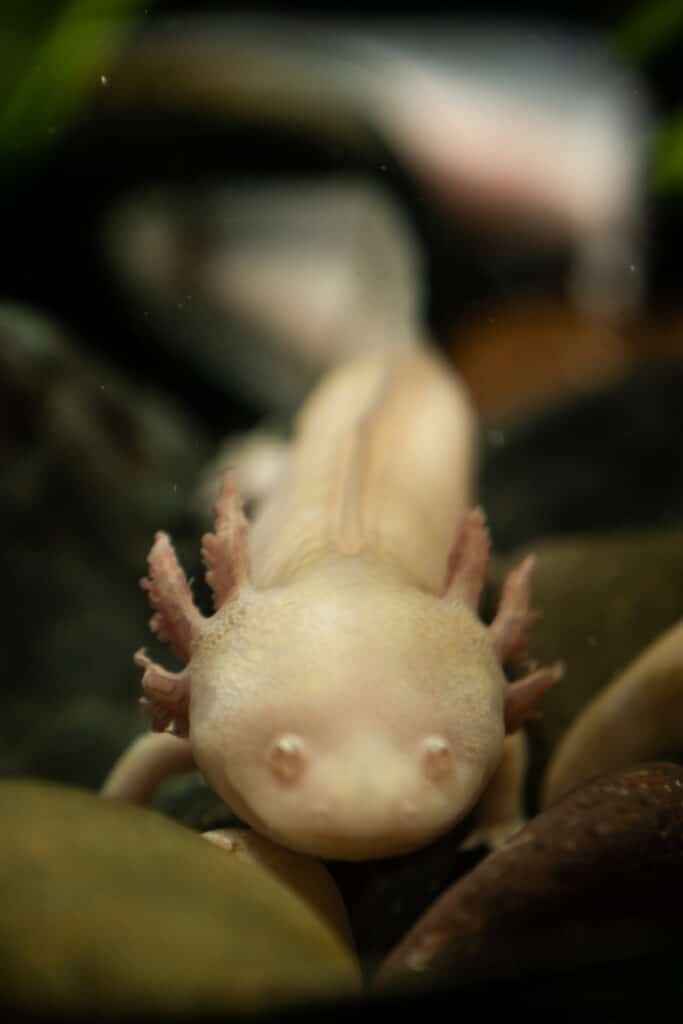
Axolotls are aquatic animals that spend their entire lives in the water. They are native to the lakes and canals of Mexico, where they live among the vegetation at the bottom of lakes.
Besides, axolotls are nocturnal, meaning they are only active at night. During the day, they typically hide among rocks and other underwater structures to avoid their predators. They are solitary species, so they usually avoid interacting with human beings or even other family members.
One of the fascinating aspects of their personality is their ability to regrow their body parts. They are known for their power to regenerate lost body parts, such as their limbs, tail, and even parts of their brain and spinal cord.
This phenomenon makes axolotls an exciting animal to study for scientists researching the potential of regenerative medicine in humans.
Besides, axolotls have a life expectancy of about 15 years in captivity, but they probably only live for five to six years in the wild. This is because of a lack of predators and environmental changes in captivity compared to their native habitats.
What Do Axolotls Eat?
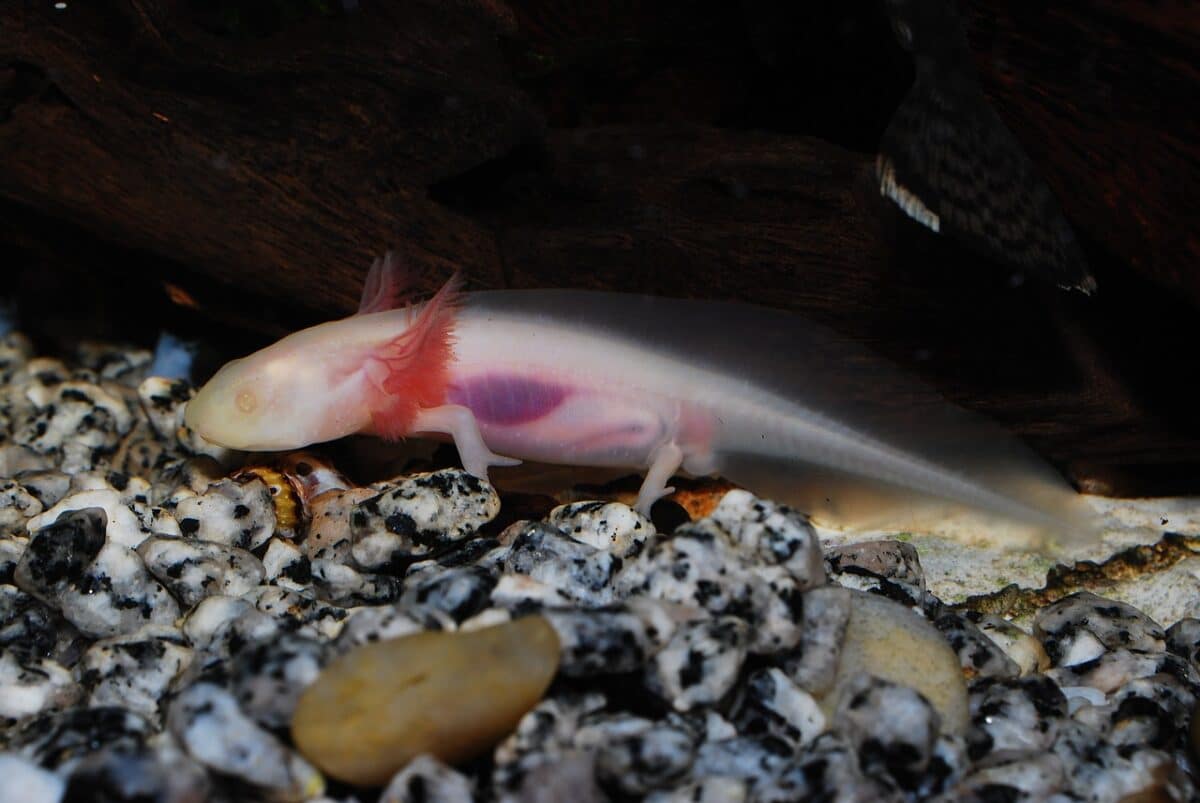
Axolotls are carnivorous animals that feed on small animals such as worms, insects, and fish. They are opportunistic hunters who will eat whatever prey is readily available.
In the wild, axolotls consume animals such as tadpoles, small fish, worms, snails, and insect larvae (including mosquito larvae). They don’t seem to be very picky eaters, although their diet tends to be exceptionally high in worms. Any creature that will fit within its jaws will become food!
When other food sources aren’t available, they have even been observed to engage in cannibalism by occasionally biting off pieces of their siblings. This might be one justification for their incredible capacity for regeneration. However, as they are carnivores, they never consume any plant materials.
With their unusually keen sense of smell, the axolotls can quickly locate food in the wild along the murky lake or river bottom. Once they have found sufficient aquatic prey, they will use a powerful vacuum to pull the meal into their mouths.
Gravel is often ingested concurrently during the process. This way, the food grinds up effortlessly in their stomach, aiding digestion. After all, their actual teeth are tiny and not helpful to them.
Besides, it is crucial to provide the axolotls in captivity with a mixed diet to ensure that they get all the necessary nutrients required for their growth and development.
Some captive axolotls may also eat pellets meant for aquarium fish. However, it is crucial to choose a high-quality pellet designed explicitly for axolotls to avoid contamination.
However, axolotls are poikilotherms who are usually fond of living in areas with lower temperatures. Therefore, their appetite stimulation is considerably low. But, they become very active in warmer temperatures and eat much more.
Axolotls Way Of Reproduction
Axolotls are solitary creatures that attain sexual maturity at the age of one year. In the wild, they spawn around February each year.
Males approach females using their pheromones and engage in a mating dance involving swaying their lower bodies and tails. The female responds to this by poking him with her snout.
Consequently, the male deposits sperm packets (spermatophores) on the seabed. Following this, the female picks up the eggs via her cloaca (a female body part in axolotls), where the sperm fertilizes her eggs.
On vegetation or rocks, where they are safe from predators, females can lay up to 1,000 eggs (the average number is around 300). Eggs hatch after a 14-day incubation period at approximately 75 degrees Fahrenheit (23.9 degrees Celsius). Then the larvae already start eating in their initial hours of life.
Since axolotls never exit their larval stage, baby axolotls will continue to be larvae even after reaching sexual maturity! Giving iodine to an axolotl will induce forced metamorphosis. This means they will lose their gills and change into another kind of salamander.
Besides, the parents of axolotls do not tend to their larvae. They have no problem eating their eggs or young. Therefore, two weeks after they hatch, the larvae can be observed swimming entirely by themselves and are no longer under the supervision of their parents.
Axolotls’ Contribution To Science
The axolotls have developed into a critical lab model. They aid with research ranging from tissue healing to development and cancer. This is thanks to their unique physiology and great capability to regrow amputated body parts.
For instance, axolotls played a crucial role in studying the development and operation of organs in vertebrates in the early 20th century. They enabled researchers to identify the root causes of spina bifida, a birth condition in which the spine does not develop normally.
Moreover, in a 1920s study, axolotls were fed thyroid tissue from cattle, contributing to the discovery of thyroid hormones. The axolotls would undergo metamorphosis, losing their gills and larval skin if the tissues had producing thyroid hormones.
Furthermore, axolotls assisted scientists in the 1980s in creating a model that describes how cells adopt various forms in embryos.
According to the “cell state splitter” model, many stem cells are pulled and stretched into different bodily tissues when embryos develop. Researchers discovered that they could observe the Axolotl’s cells contract and expand before they develop into tissues.
Additionally, in 2011, an extract from axolotl eggs activated a tumor-reducing gene and prevented breast cancer cells from growing.
But, Axolotl’s role in regenerative medicine is perhaps the most intriguing. The critters can regrow lost organs. They can re-grow limbs, tails, sections of the eye, and even parts of the brain.
If you want to discover even more about axolotls’ scientific contributions and population status, click here.
The Conservation Status of Axolotls
While captive axolotls can live in an unpleasant aquarium or lab (and wild axolotls might be living divinely in their evolved ability to regenerate organs and limbs) – they are definitely not capable of enduring habitat destruction. They cannot survive their home ecosystem being bombarded with new predators and environmental pollutants.
In addition to being swamped by invasive tilapia and perch, both of which consider axolotls to be a scrumptious snack, the lakes in their native region have become polluted by old wastewater systems. As a result, the remaining populations are struggling to survive.
On the other hand, where the wild population is struggling to survive, the captive axolotl populations are doing great. In fact, they are the most prevalent amphibians in the world.
Additionally, even though axolotl research is significant for science, captive axolotls are equally popular exotic pets.
The axolotls have been listed as critically endangered amphibians by the IUCN since 2006. In fact, in 2019, a population survey concluded that possibly fewer than 1,000 specimens exist in the wild.
What’s being done to save them?
The Mexican government and other axolotl conservation agencies are making every possible effort to rescue the species. These efforts include recovering the lakes and natural environments that this imperiled salamander species call home.
Making chinampas (rafts composed of aquatic plants, mud, and wood that were once employed as floating gardens in ancient Mesoamerican culture), is one method of creating habitats for them to preserve and multiply their populations.
Axolotls As Pets
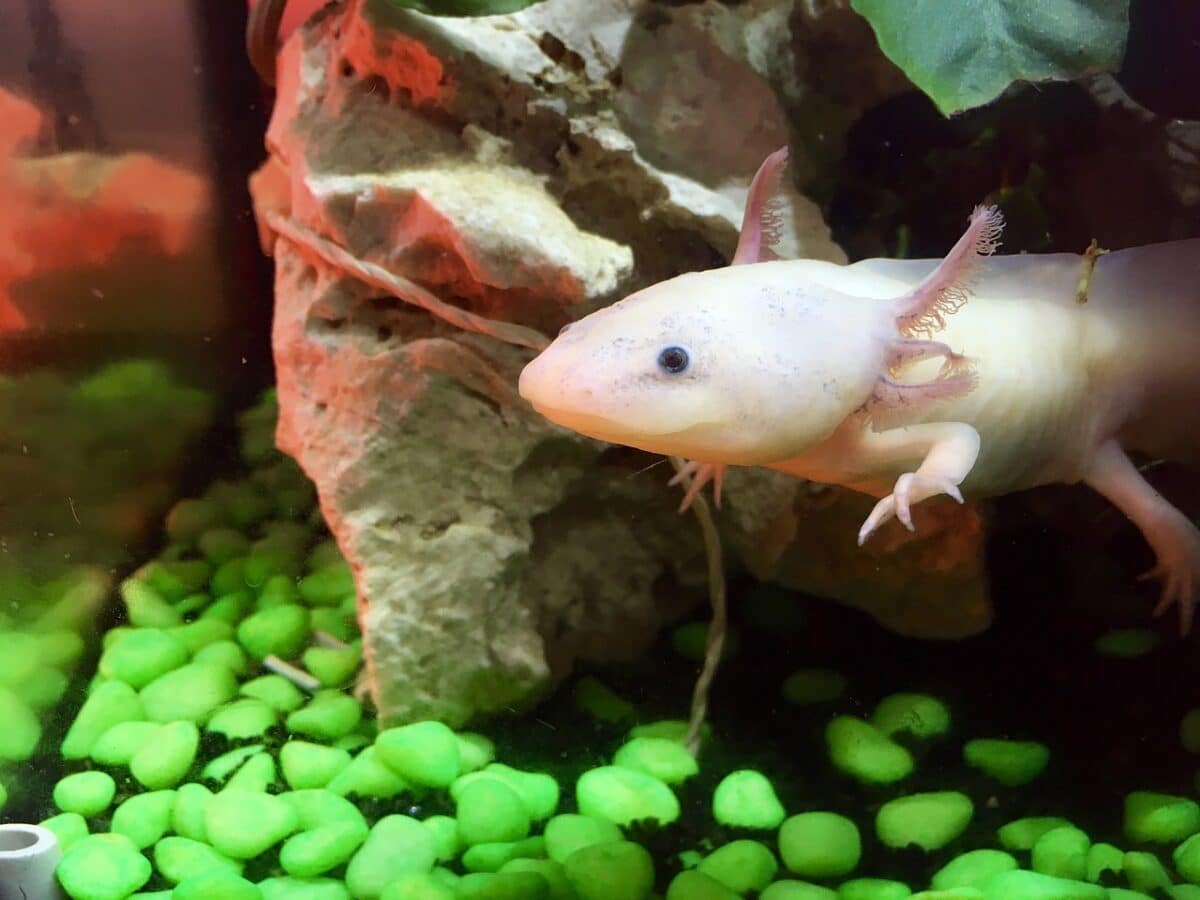
Axolotls are friendly, entertaining aquatic companions that will bring you years of fun if adequately cared for. Fortunately, if they are safely housed and nourished, they are rather easy to care for.
They can be wonderful pets. But you should remember that they might be difficult for new pet owners who may not have previously taken care of amphibians. They require concrete water tanks and reasonably uniform water temperatures that cater to their sensitive skin.
Moreover, they dislike water flow but require a lot of filtration because they produce a lot of waste. To keep the water clean, periodic partial water replacements are essential for them.
The Final Word on Axolotl
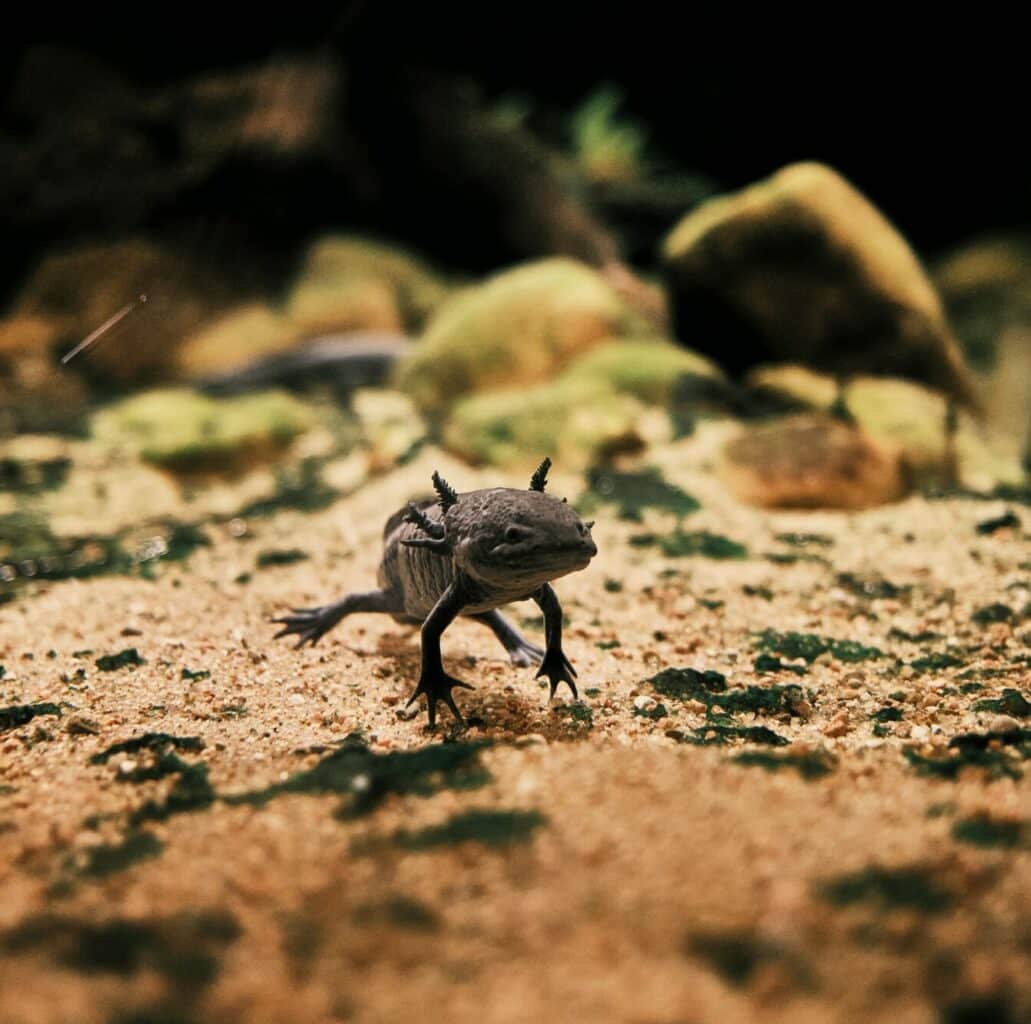
Now, you should have a much firmer grasp of the vital information regarding axolotls. Likewise, you must acknowledge that their declining populations in the wild must be declared an emergency. Every individual must play their part in their conservation.
By reducing water contamination and the abundance of predatory animals in their habitats, wild species can be well protected from the risk of extinction.
After all, it is the responsibility of humans to hold themselves accountable for their actions that lead to their possible extinction. We desperately and urgently need to make amendments to preserve their populations.
Thank you for reading this article! Our planet is filled with other fascinating and mesmerizing organisms; look at the Top 10 Scariest Green Animals.
- Minnesota-Animals That Won’t be Around for Future Generations - October 21, 2024
- Goodwill Worker Finds a Boa Constrictor in Donations Bin in Texas - October 21, 2024
- Rare Footage of Man Fighting Bear on a Cliff Edge - October 20, 2024

